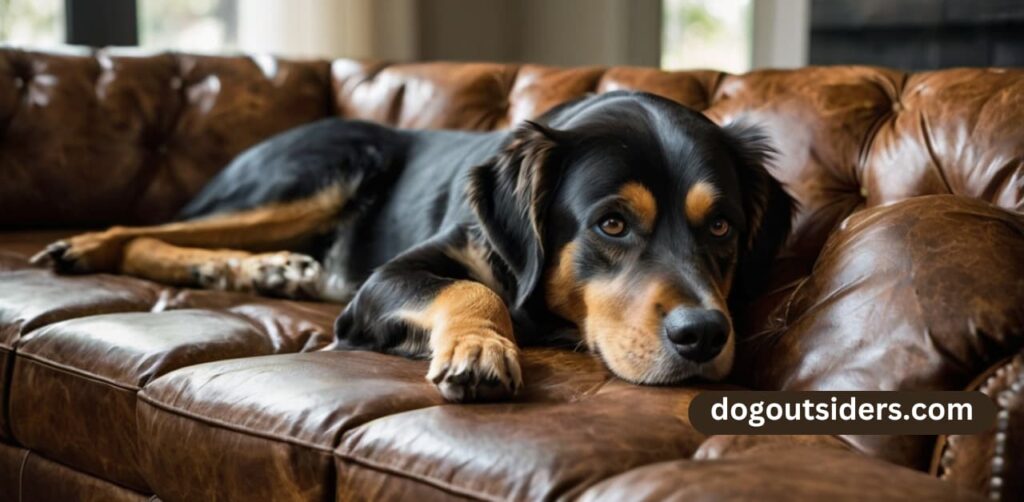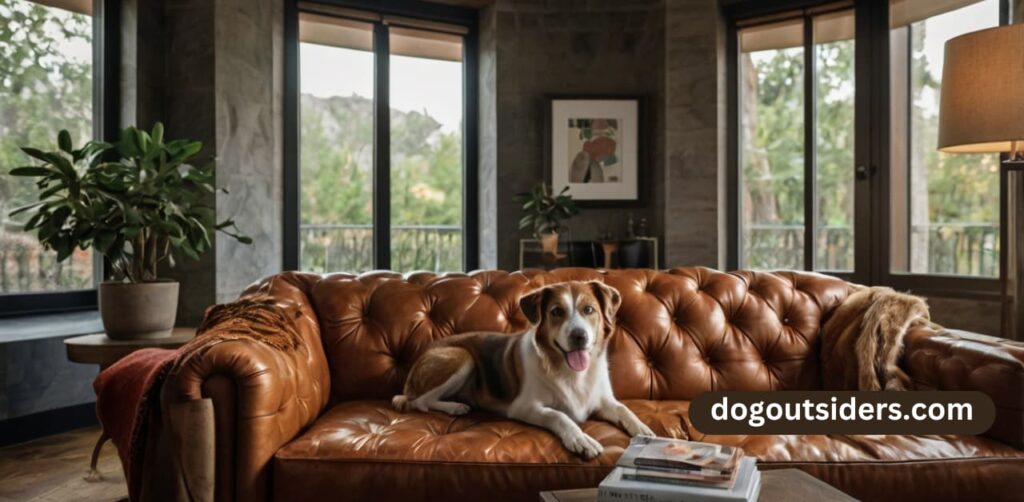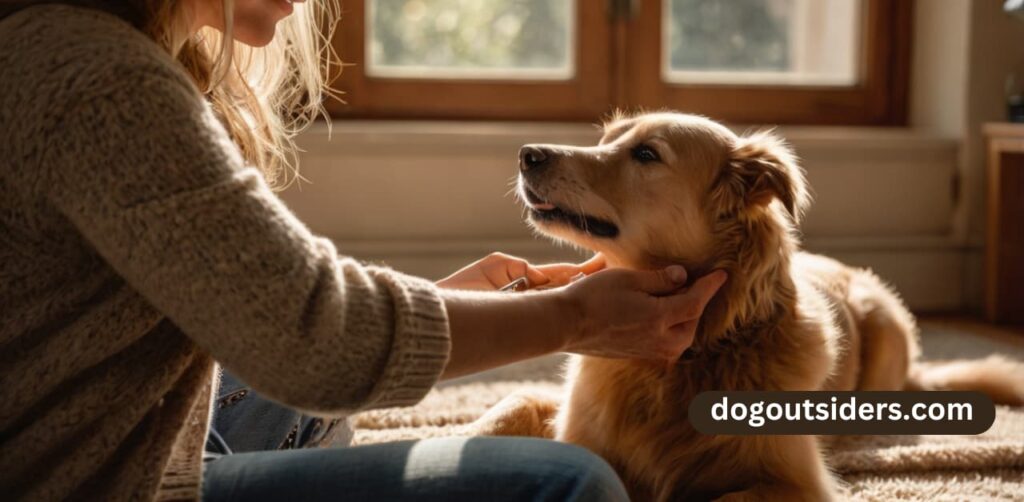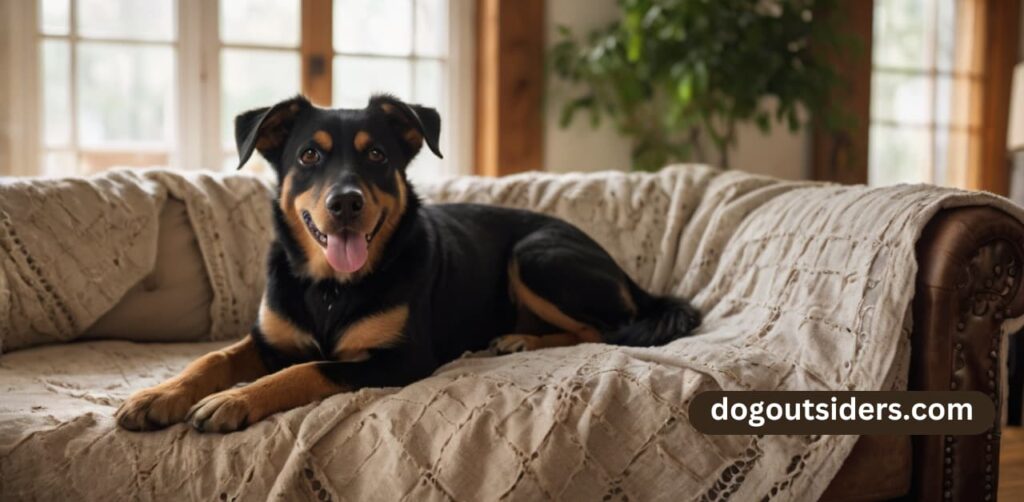Did you know that over 60% of pet owners worry about their furniture, like their leather couch, and consider options such as dog proof leather sofa, leather sofa protectors, or a leather chair? I understand the struggle of keeping my leather sofa looking pristine while sharing my home with a furry friend who loves to nail it. Dogs can be tough on a leather couch, leaving scratches from their nails, stains, and odors behind. But protecting my leather sofa from fur doesn’t have to be a headache. With a few simple strategies, I can enjoy both my pet and my stylish leather furniture couch.From using protective covers for pet owner leather furniture to regular cleaning routines for a leather couch, there are effective ways to maintain that sleek look. In this post, I’ll share practical tips on how to protect leather sofa from dog and their fur while keeping it cozy for everyone. Let’s dive in!
Key Takeaways
- Understand that leather is generally durable but can be damaged by pet claws, fur, and accidents; choose a high-quality leather that can withstand wear and tear.
- Assess your dog’s behavior and fur to determine if leather is a suitable choice for your home, especially if your pet is prone to chewing or scratching.
- Regular grooming helps minimize shedding and dirt on your sofa; brush your dog frequently to keep fur off the leather.
- Set clear house rules for your pets, such as where they can sit, to protect your leather couch and leather furniture from scratches and stains.
- Invest in protective covers for your leather furniture sofa to shield it from pet hair and accidents, making it easier to clean and maintain.
- Use leather protection products to create a barrier against spills and stains, ensuring your sofa stays in great condition longer.
Understand Leather’s Durability with Pets

Leather vs. Fabric
Leather is more durable than fabric. It resists wear and tear better, making it ideal for pet owners with leather furniture. I’ve noticed that my leather sofa shows fewer signs of damage compared to my previous fabric couch. High-quality grain leather can handle daily use without looking worn out.
Scratches from dog nails are less noticeable on leather. Unlike fabric, which can snag and tear easily, leather can withstand these minor damages. This durability gives me peace of mind when my dog jumps on the leather furniture sofa.
Easy Maintenance
Cleaning leather is simple. A damp cloth removes most dirt and stains quickly. For tougher stains, a mild soap solution works well. I often wipe down my sofa after my dog has been playing to keep it looking fresh.
Leather upholstery does not hold onto pet odors like some fabrics do. This feature keeps my living space smelling pleasant, even after a long day with my furry friend. I appreciate how quickly I can clean up spills or messes without worrying about lingering smells.
Odor Resistance
Leather furniture is friendly for households with pets. It does not absorb odors, which is a common issue with fabric furniture. This quality makes it easier to maintain a clean environment.
I remember a time when my dog had an accident on the couch. With my old fabric sofa, the smell lingered for days despite cleaning efforts. However, with my current leather sofa, I simply cleaned it up, and the odor vanished almost immediately.
Types of Leather
Top grain leather is often recommended for pet owners. It offers a balance of durability and comfort. This type of leather withstands scratches and tears better than lower-quality options.
Pet scratches may still occur but are usually superficial. They can often be buffed out or treated easily, especially if you act quickly. Investing in high-quality grain leather pays off in the long run.
Protecting Your Sofa
To further protect your sofa, consider using slipcovers designed for leather furniture. These covers can shield against scratches and stains while maintaining the look of your sofa. Regular conditioning also helps keep the leather supple and less prone to damage.
In addition to these tips, training your dog to stay off the furniture can help preserve its condition. Establishing boundaries early can prevent unnecessary wear.
Assess if Leather is Pet Friendly

Quality Matters
The quality of leather plays a big role in its durability. Higher-grade leather options, such as full-grain or top-grain, are more resistant to scratches and stains. I prefer full-grain leather for my furniture because it ages beautifully and withstands wear better than lower grades.
Lower-quality leather can be more prone to damage from pets. It may not hold up well against claws or accidents. When choosing leather furniture options, always check the grade. Investing in better quality can save money in the long run.
Protective Finishes
Applying protective finishes can enhance leather’s durability against pet damage. These finishes create a barrier that helps repel moisture and dirt. I’ve noticed that using a good conditioner helps maintain the leather’s softness while providing some protection.
For pet owners, choosing leather that comes pre-treated with protective features can be a smart decision. Additionally, performing routine upkeep—like cleaning and conditioning—helps maintain the leather’s fresh appearance over time.
Material Comparison
Comparing leather with other materials helps determine what fits best in a pet-friendly home. Fabrics like microfiber or canvas may resist stains better but can attract pet hair. They might also wear out faster under heavy use.
Leather couches tend to be easier to clean than fabric options. A simple wipe-down usually removes dirt and fur. My experience shows that leather chairs last longer despite occasional scratches.
Here’s a quick comparison:
- Leather: Durable, easy to clean, can scratch.
- Microfiber: Soft, stain-resistant, attracts hair.
- Canvas: Budget-friendly, washable, wears out quickly.
Choosing the right material depends on your lifestyle and pets’ behavior. If your dog loves to jump on the couch, consider how each option will hold up over time.
Final Thoughts
Assessing whether leather is pet-friendly involves understanding its quality, protective measures, and comparisons with other materials. Higher-grade leathers provide better resistance to damage. Protective finishes enhance their durability significantly.
I’ve found that investing in quality leather furniture pays off. It withstands my dog’s playful nature while remaining stylish and functional. Evaluating these factors ensures you make an informed decision for your home.
Groom Your Dog Regularly

Nail Care
Trimming your dog’s nails is essential. Long nails can scratch the leather sofa easily. I make it a habit to trim my dog’s nails every three weeks. This routine helps keep my furniture safe from damage. Use a quality nail clipper designed for dogs. After trimming, check for any sharp edges and smooth them down.
Brushing Sessions
Regular brushing sessions are important for reducing shedding. Brushing removes loose fur and dander. I brush my dog twice a week. This keeps the amount of hair on my leather sofa to a minimum. Use a brush suitable for your dog’s coat type. A slicker brush works well for many breeds. It effectively collects loose hair and dander.
Schedule Grooming
Create a grooming schedule that works for you and your dog. Regular grooming not only keeps your dog clean but also protects your leather sofa. Aim for at least once a month for full grooming sessions. During these sessions, wash your dog with pet-safe shampoo. This helps minimize odors and keeps their coat healthy.
Benefits of Grooming
Grooming offers several benefits beyond protecting furniture. It strengthens the bond between you and your dog. Regular grooming can also help detect skin issues early. Look for lumps or irritations while brushing or bathing. This proactive approach can save you from costly vet bills later.
Cleaning Tips
Keep cleaning supplies handy to manage any messes quickly. If your dog has an accident on the sofa, clean it immediately. Use a damp cloth and mild soap to wipe the area gently. Avoid harsh chemicals as they can damage leather surfaces.
Dander Management
Dog dander can accumulate on your leather sofa over time. Regular grooming significantly reduces this issue. Use an air purifier in the room to help manage allergens too. I noticed a big difference in air quality after adding one to my home.
Personal Experience
I have learned that consistent grooming makes a huge difference in maintaining my leather furniture’s condition. My dog’s shedding decreased significantly after establishing a regular grooming routine. It also saves me time when cleaning the sofa.
Establish House Rules for Pets
Set Boundaries
Creating clear boundaries is essential for protecting your leather sofa. Pets need to understand where they can and cannot go. I found it helpful to designate specific areas in my home for my dog. For instance, I set up a cozy corner with a blanket and toys just for him. This gives him a space he can call his own while keeping him off the furniture.
Establishing rules about furniture access should start early. As soon as you bring your pet home, enforce these rules. If your dog jumps on the sofa, gently guide them back down. Consistency is key. Over time, they will learn to respect the boundaries you’ve set.
Reinforce Rules Consistently
Reinforcing the rules consistently helps pets grasp expectations. If one day you allow them on the sofa and the next day you don’t, it confuses them. I made a habit of redirecting my dog every time he approached the sofa. This way, he quickly learned that the sofa was off-limits.
Using a firm but gentle tone works best when correcting unwanted behavior. It’s important to remain calm and not yell. Pets respond better to a steady approach rather than an emotional reaction. Celebrate their successes when they follow the rules. A simple “good boy” or a treat can make all the difference.
Use Positive Reinforcement
Positive reinforcement is an effective method to encourage desired behaviors around the sofa. Reward your pet when they choose their designated space instead of the leather sofa. I often use treats or praise to reinforce this behavior. It creates a positive association with staying off the furniture.
Training sessions are also an excellent opportunity to teach your pet commands like “off” or “stay.” These commands help them understand what you expect from them regarding furniture access. Practice these commands regularly, making sure to reward them each time they succeed.
Consider using training tools like clickers or special treats during these sessions. They can enhance your pet’s learning experience and keep them engaged in training.
Use Protective Covers for Sofa

Quality Covers
Select high-quality throws or covers designed specifically for leather protection. These protective leather couch covers can shield your sofa from scratches, stains, and fur. Look for options that are durable and easy to clean.
I prefer covers made from materials that are soft yet tough. They should fit snugly over the sofa without slipping. A well-fitted cover protects the leather underneath effectively.
Regular Maintenance
Change and wash protective covers regularly to maintain cleanliness and hygiene. This practice helps remove pet hair and odors. It also keeps the covers looking fresh.
I find it helpful to have a few covers on hand. This way, I can rotate them as needed. Washing them every couple of weeks keeps my living space pleasant.
Proper Fit
Ensure that covers fit well to avoid slipping and exposing the leather underneath. Loose covers can lead to more pet sofa damage over time. A good fit prevents wear and tear on the leather.
Consider adjustable covers if you have a leather sectional sofa. This flexibility allows for a better fit across different sections. Secure ties or straps help keep the cover in place.
Additional Options
Explore other types of leather furniture covers available in stores or online. Some brands offer fitted designs tailored for specific models of sofas. These options provide extra protection while enhancing the look of your furniture.
Using friendly covers can also make your home more inviting. They come in various colors and patterns, allowing you to match your decor easily.
Benefits of Protection
Using protective covers has many benefits. They extend the life of your leather sofa significantly. They also save you money in the long run by reducing the need for repairs or replacements.
A well-protected leather couch looks great and stays comfortable. It provides a cozy spot for both pets and humans. By investing in quality covers, you can enjoy your sofa worry-free.
Provide Separate Seating for Pets
Designate Relaxation Area
Creating a comfortable space for pets is essential. I always set up a cozy corner for my furry friend. This area should be away from the leather sofa. A designated spot helps keep the couch fur-free and protects it from scratches.
Choose a location that your pet can easily access. Make sure it’s quiet and inviting. I often place a soft dog bed there to encourage my pet to relax. A familiar blanket or favorite toy can also make the space more appealing.
Stylish Pet Beds
Selecting stylish pet beds is important. They should match your home decor while being functional. Many options exist that are both attractive and comfortable. Look for beds made with durable materials to withstand wear and tear.
I prefer beds that are easy to clean. Some come with removable covers, making maintenance simple. A well-chosen bed not only keeps pets off the sofa but adds to the room’s aesthetics too.
Encourage Use of Designated Space
Encouraging pets to use their special area takes some effort. I find that placing toys in their spot works wonders. It gives them something fun to do away from the couch.
Treats can also motivate pets to stay in their designated space. When my dog gets a treat for resting on his bed, he learns that this is his safe zone. Over time, they start associating their space with positive experiences.
Scratching Posts and More
In addition to beds, consider adding scratching posts or other pet-friendly items nearby. These can keep your pets entertained and distracted from the sofa. Providing various types of entertainment helps maintain peace in the living area.
I’ve noticed that when my cat has a scratching post, she spends less time on the furniture. The right distractions can significantly reduce unwanted behavior.
Floor Protection
Protecting your floor is also crucial when you have pets. Using rugs or mats can help catch fur and dirt before it reaches your sofa. Choose easy-to-clean options to simplify maintenance.
I recommend using washable rugs underneath pet areas. They trap fur and can be cleaned regularly without hassle.
Apply Leather Protection Products
Leather Conditioners
Researching and selecting the right leather conditioner is crucial. Quality leather conditioners help maintain the suppleness of leather surfaces. They nourish and protect from drying out or cracking. I always choose a conditioner that matches the specific type of leather in my sofa, whether it’s grain leather or natural leather structures.
Applying a quality leather conditioner requires following the instructions carefully. Most products recommend cleaning the surface first. After cleaning, apply the conditioner evenly using a soft cloth. This step ensures that the product penetrates deeply into the leather textures.
Reapplying the conditioner every six months keeps the leather looking fresh. Regular conditioning helps prevent many leather repairs down the line.
Leather Protectants
Using leather protectants adds an extra layer of defense against stains and damage. These products create a barrier that repels water and dirt. I find that spray leather protectors are easy to use and effective for daily protection.
To apply, clean the sofa thoroughly first. Then, spray the protectant evenly across all surfaces. Allow it to dry completely before using the sofa again. This process can take several hours, so plan accordingly.
It’s essential to reapply leather protectors every few months or after spills. Doing so maintains the protective barrier and keeps your furniture looking new.
Additional Care Tips
Incorporating additional leather care tips can enhance your sofa’s durability. Avoid placing your sofa in direct sunlight to prevent fading. Also, keep pets’ nails trimmed to reduce scratches on the surface.
I often use a soft brush to remove pet hair before applying any products. This simple step makes a big difference in how well the protectants work.
Consider investing in a quality leather cleaner as well. A good cleaner removes dirt without damaging delicate leather surfaces. Clean your sofa regularly to maintain its appearance and texture.
Clean and Maintain Your Sofa
Regular Schedule
Developing a regular cleaning schedule is essential for keeping your friendly leather couch in top condition. I find that setting aside time each week helps me stay on track. Dust and dirt can accumulate quickly, especially with pets around.
Use a soft cloth to wipe down the surface. This simple action prevents buildup that can lead to stains or odour over time. I also recommend vacuuming the cushions gently every few weeks. This will remove hair and debris that may settle into the fabric.
Safe Cleaning Solutions
Using appropriate cleaning solutions is crucial for maintaining a beautiful leather couch. Not all cleaners are safe for leather, so it’s important to choose wisely. Look for products specifically designed for leather care. These solutions clean without damaging the material.
I personally prefer using a mixture of mild soap and water for light cleaning. It works well and is gentle on the leather. Always test any cleaner on a hidden area first to ensure it doesn’t cause discolouration or damage.
Frequent Inspections
Inspecting your sofa frequently helps catch signs of wear or damage early. Look for cracks, fading, or any unusual spots that may indicate deeper problems. If you notice anything concerning, address it promptly to prevent further issues.
For example, if my dog scratches the surface, I make sure to treat it right away. Applying a leather conditioner can help restore moisture and flexibility. This keeps the leather looking fresh and extends its lifespan.
Addressing Stains and Odours
Stains and odours can be common issues when sharing your space with pets. For minor stains, blotting with a clean cloth can often do the trick. Avoid rubbing, as this can spread the stain further.
For persistent odours, consider using baking soda. Sprinkle it on the affected area and let it sit overnight before vacuuming it off. This method has worked wonders for me in keeping my sofa smelling fresh.
Final Thoughts
Maintaining your leather sofa requires attention and care. By following these steps, you can protect your investment from potential damage caused by pets. A clean, well-maintained sofa not only looks great but also enhances your living space.
Conclusion:
Protecting my leather sofa from my dog is totally doable. By understanding leather’s durability, grooming my pet, and setting clear house rules, I can keep my furniture looking great. Using protective covers and applying leather protection products gives me peace of mind. Regular cleaning and maintenance ensure my sofa stays in top shape.
Now it’s time to take action. Implement these tips and enjoy a stylish, pet-friendly home. Your leather sofa deserves the best care, just like your furry friend! Let’s keep both happy.
FAQ’s:
Leather is generally durable and can withstand wear from pets. However, it can be scratched or stained. Choosing high-quality leather can enhance its resilience against pet-related damage.
Yes, leather can be a good choice for dog owners. It’s easy to clean and less absorbent than fabric. However, consider your dog’s behavior and grooming habits before making a decision.
Regular grooming helps reduce shedding and dirt on your leather sofa. Aim for at least once a week, especially if your dog has long hair or sheds frequently.
Set clear boundaries, like no jumping on the sofa or staying off the furniture altogether. Consistent training will help keep your leather sofa safe from scratches and stains.
Yes, protective covers can significantly reduce wear and tear on your leather sofa. They act as a barrier against dirt, scratches, and pet hair while maintaining style.
Use specialized leather conditioners and protectants designed for furniture. These products can help repel stains and moisture, keeping your sofa looking new longer.
For minor spills, gently blot with a soft cloth. For tougher stains, use a pH-balanced cleaner specifically made for leather. Always follow up with conditioning to maintain suppleness.






